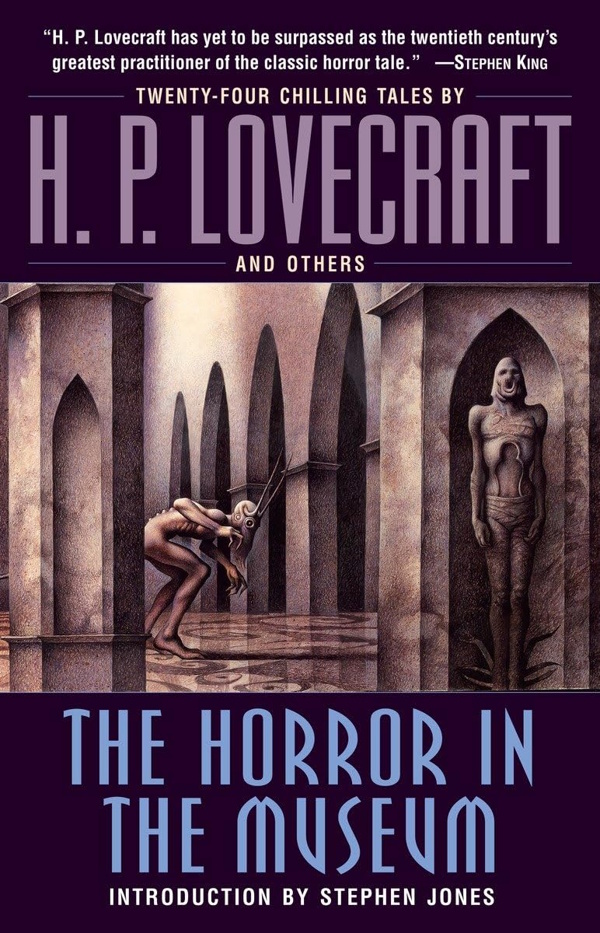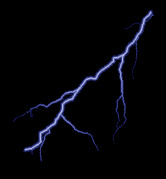The Horror in the Museum and Other Revisions
 |
 |
 |
 |
 |

- Publication Date: September 25, 2007
- Written by: H. P. Lovecraft
- Page count: 453
If you didn't get your H. P. Lovecraft fix with The Complete Fiction and The Complete Cthulhu Mythos Tales, then I have one more book that I'd recommend to you. The Horror in the Museum and Other Revisions collects all of Lovecraft's work that he did in collaboration with other authors at the time. While the stories here aren't as famous as his standalone works, and pretty all-over-the-place when it comes to quality, they're worth checking out if you're a completionist like I am.
The book is divided into two halves. The first is called "Primary Revisions", and despite being labeled as such, that's not really what these stories are. Often times, Lovecraft would keep the title or central idea of whatever original draft he was revising, then write an entirely new story from the ground up. As icing on the cake, he would sprinkle in some references to his Cthulhu Mythos works and keep expanding the pantheon of gods and creatures that he created. Along with The Mound and The Curse of Yig (which I've talked about elsewhere), there are some great highlights in this first half. The Horror in the Museum is a pretty tense story about a person being locked in a museum overnight where one of the exhibits is an otherworldly horror. Another is Out of the Aeons, which tells the story of an ancient man who was mummified after beholding the fiendish monster Ghatanothoa. While many of these primary revisions feature the sanity-shattering cosmic horror that Lovecraft did best, not every one is at the same level of quality. Certain ones such as The Last Test and Electric Executioner are drawn-out, boring tales that always feel like a slog to read through. I can't get invested in their characters or settings, and the ways in which they try to connect to the Mythos tales feel like tacked-on additions done a the last minute. The stories will unfold like a standard mystery, then in the last act, a character will name-drop Shub-Niggurath or the Necronomicon, only for nothing otherworldly or supernatural to occur. In these cases, it feels like he lazily dropped in the references without much though put into them or how they would further develop the plot. Regardless of the varying quality, I consider this first half to be a must-read if you want to get a feeling for Lovecraft's work that gets overlooked in many other collections.
The second half of the book covers what is known as the "Secondary Revisions". Lovecraft didn't play as large of a role in these stories, often taking the part of an advisor or light editor to these authors. Because of this, you could almost consider these stories skippable, as many of them don't feature his standard voice in the prose, and the plots aren't as heavily based on otherworldly horrors beyond comprehension. While nowhere near as memorable as the first half, it does feature two highlights that I consider to be underrated gems in his bibliograpy. One is The Horror at Martin's Beath, a story that was written by his future wife, Sonia Greene. It follows a group of sailors who catch a horrific sea monster, and it perfectly fits Lovecraft's main theme of there always being a larger, unseen horror just outside of our line of sight. My favorite story of the Secondary Revisions is "Till A' the Seas", a post-apocalyptic tale that follows the last man on Earth as he travels the desolated landscapes looking for water. This isn't a story where a cosmic creature is the threat at hand. Instead, the cosmos itself is the threat here, as the Earth is slowly losing its orbit and drifting towards the Sun. For an author who loved to play with the idea of cosmic hopelessness, how much more hopeless can you get than space itself deciding to wipe humanity out? While short, it packs a punch for me, and I wish it was more readily available in other Lovecraft collections.
While The Horror in the Museum and Other Revisions isn't my favorite Lovecraft book that I own, I'm happy to have it in my collection. I really enjoy getting a comprehensive look at artists that I admire, and this book helps to fill in the holes in his bibliography, warts and all. It's interesting to think that there was a time when these revisions were paying Lovecraft's bills instead of his own original writing that he is known for today. He was very dismissive of his own work, yet was willing to lend a hand to the authors that he admired. Even if they're not as interesting or heavy-hitting as his solo works, he provided enough interesting ideas that helped these stories be remembered by those who carried on his tradition after him. Any fan of weird fiction should give this a read to get a more complete look at one of the masters of the genre.



